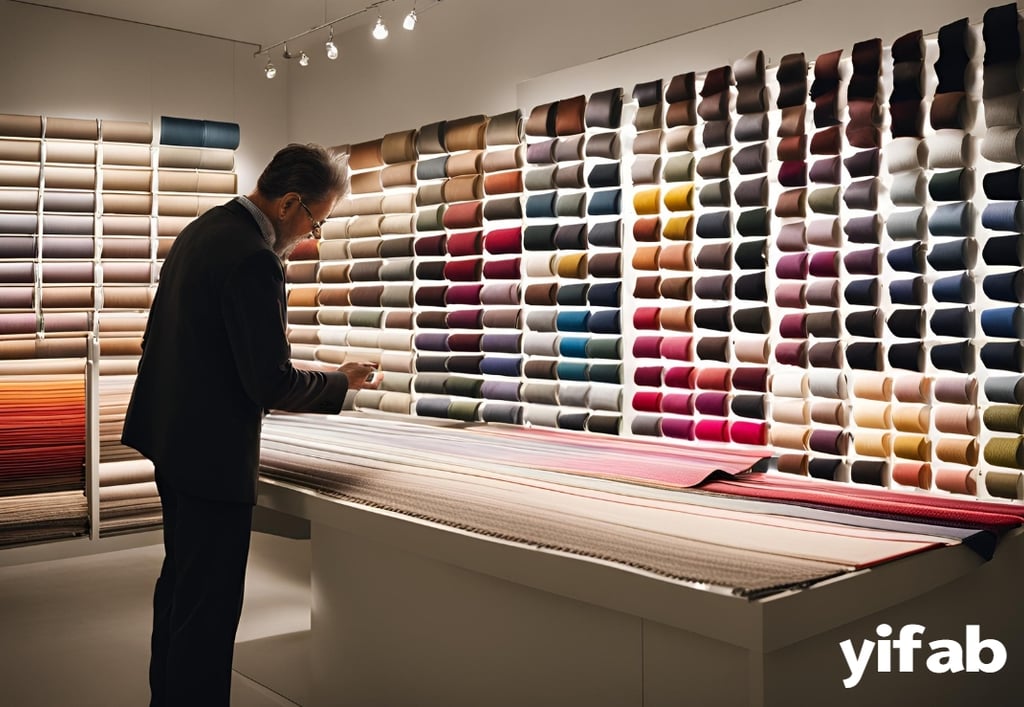How to Recognize Quality Fabrics: Professional Advice from Buyers
How to Recognize Quality Fabrics
10/18/20242 min read


Recognizing quality fabrics is an essential skill for anyone who values durability, comfort, and style in their clothing choices. Whether you're a seasoned fashion enthusiast or a casual shopper, understanding what distinguishes high-quality fabrics can elevate your wardrobe and ensure your garments stand the test of time. Here are insights and tips from experienced buyers on how to identify quality fabrics:
1. Consider Fabric Composition
Quality fabrics often start with superior raw materials. Here are some key compositions to look for:
Natural Fibers: Fabrics made from natural fibers like cotton, silk, wool, and linen are highly prized for their breathability, comfort, and luxurious feel. These fibers are often more durable and age gracefully.
High-Quality Synthetic Blends: While natural fibers are preferred by many, modern synthetic blends such as polyester blends or modal blends can offer durability, wrinkle resistance, and easy care properties without compromising comfort.
Silk and Cashmere: Known for their luxurious feel and high cost, silk and cashmere are indicators of premium quality when sourced and processed responsibly.
2. Assess Fabric Weave and Texture
The way a fabric is woven significantly impacts its quality and performance:
Tight Weave: Quality fabrics typically have a tight and even weave. Hold the fabric up to light—if you can see through it easily, it may be less durable.
Smooth Texture: Run your hands over the fabric. Quality fabrics feel smooth and substantial, without any rough or uneven patches.
Weight and Drape: A quality fabric often has a good weight-to-drape ratio. It should hang elegantly and flow naturally when worn.
3. Examine Finishing and Details
Details in fabric finishing can reveal its quality and attention to craftsmanship:
Selvage Edge: Look for a selvage (self-finished edge) on woven fabrics, especially denim and higher-end cottons. Selvage edges indicate that the fabric was woven on traditional shuttle looms, often producing a denser and more durable fabric.
Print Quality: If the fabric is printed, check the sharpness and clarity of the print. Quality printing techniques ensure that patterns are well-defined and colors are vibrant.
Stitching and Seam Quality: Inspect the stitching on the fabric. Quality garments have even stitching with no loose threads or irregular seams.
4. Perform the Touch Test
Touching and feeling the fabric can reveal a lot about its quality:
Softness: Quality fabrics feel soft to the touch, with a smooth and pleasing texture.
Thickness and Density: Hold the fabric up to the light to gauge its thickness and density. Thicker fabrics tend to be more durable, while dense weaves indicate quality craftsmanship.
5. Seek Recommendations and Reviews
Utilize the experiences of others in your search for quality fabrics:
Consult Experts: Seek advice from fabric experts, tailors, or experienced buyers who can provide insights based on their knowledge and experience.
Read Reviews: Online reviews and testimonials can offer valuable feedback on the quality and performance of fabrics from various brands and retailers.
Conclusion
Recognizing quality fabrics requires a combination of knowledge, observation, and hands-on experience. By understanding fabric compositions, assessing weave and texture, examining finishing details, and performing tactile tests, you can confidently select fabrics that meet your standards of quality and style. Whether you're shopping for everyday basics or special occasion pieces, investing in quality fabrics ensures that your wardrobe staples endure and continue to look their best over time.
Armed with these tips from seasoned buyers, you're equipped to make informed choices and build a wardrobe that reflects your discerning taste and appreciation for craftsmanship.
